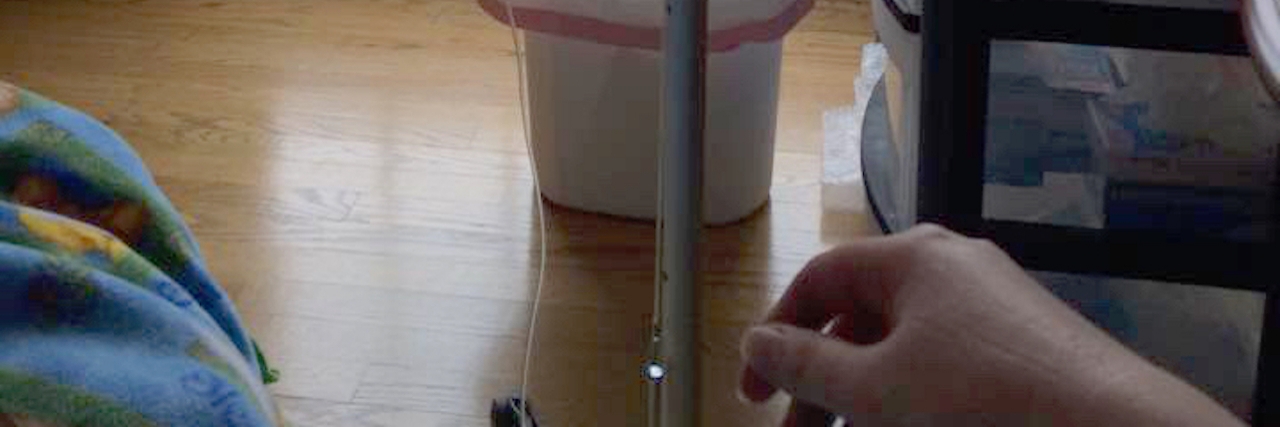“Well, since you’re off now…”
That’s the beginning of a statement usually directed at me by well-meaning individuals who don’t seem to understand what it’s like to live day in and day out with multiple invisible chronic illnesses. It’s a common assumption that since I’m no longer working I have unlimited time on my hands to help with whatever comes up. It’s as if to some people I’m on a permanent vacation. I’m here to assure you, this is no vacation.
To clear things up, I’m not just “off.” I’ve been living with chronic illness since I was 7 years old. That makes nearly 32 years of doctor visits, multiple diagnoses, hospital stays, surgeries, lab draws, etc. For the most part, I’ve been able to live a “normal” life. That means in spite of the unrelenting pain, at times unexplainable symptoms and the side effects to medications and such, I’ve been able to “blend in.” As long as I was smiling, had my makeup on, hair styled and I was going to school or work, no one really knew or questioned how sick I was. That all changed in July 2011. It’s like someone flipped a switch. Things went from “OK, I can navigate what life has given me” to “How in the world am I going to survive this?”
My life changed almost overnight. I spent the better part of eight months searching for yet another diagnosis. Finally, at the end of February 2012, I received one, but little did I know the uphill battle had only just begun. I pushed myself to continue to work because, after all, I had a diagnosis and a treatment plan. It wasn’t a cure, mind you, but my expectations were high as they always were. Though it seemed the more I pushed myself, the more my body was failing me, treatment or not. That was a hard reality to accept. This reality became more glaring when I had to resign from my longtime job in August 2014. It seemed everything I feared over the years was coming true, and there was nothing I could do to stop it.

Since I’ve been “off,” I’ve spent time adjusting to and rejecting new medications. I do have good days here or there, meaning my pain level is a four or five and I probably didn’t take any pain medication that day. And yes, you will likely see me out on those days, if I can make it happen. I live for my good days. However, for every good day, there are an equal number (if not more) bad days that you don’t see. You don’t see me unable to move from my bed to the restroom without assistance. You don’t see my accessible devices, like the shower chair I use because I can’t stand for longer than a few minutes at a time some days. You don’t see me wince in pain because every joint hurts and my pain medication hasn’t really been effective that day. You don’t see the three days I spend in bed unable to move from a migraine, unable to find relief. You don’t see me throwing up from the weekly low-dose chemotherapy injections.
I understand it’s more comfortable to relate to the “good days” me only, but I can tell you that overlooking my struggles or dismissing the “bad days” me is a loss for both of us. I’ve learned so much about life and chronic illness, and I would love to share that with you. I would love to widen your perspective so your impact can be a positive one. So that maybe you don’t unintentionally say something hurtful to a chronically ill person in future. That dialogue would be great. I hope to have that with you one day.
As for me, I’m adjusting. I think I’ll always be adjusting to this new life. I live one day at a time, not planning too far into the future but being grateful for the present. I definitely have down days, but I also have an amazing support team to remind me I can indeed survive whatever this illness or the world throws my way.
Follow this journey on Life on the Relapse.
The Mighty is asking the following: What’s one thing people might not know about your experience with disability, disease or mental illness, and what would you say to teach them? If you’d like to participate, please send a blog post to community@themighty.com. Please include a photo for the piece, a photo of yourself and 1-2 sentence bio. Check out our Submit a Story page for more about our submission guidelines.

